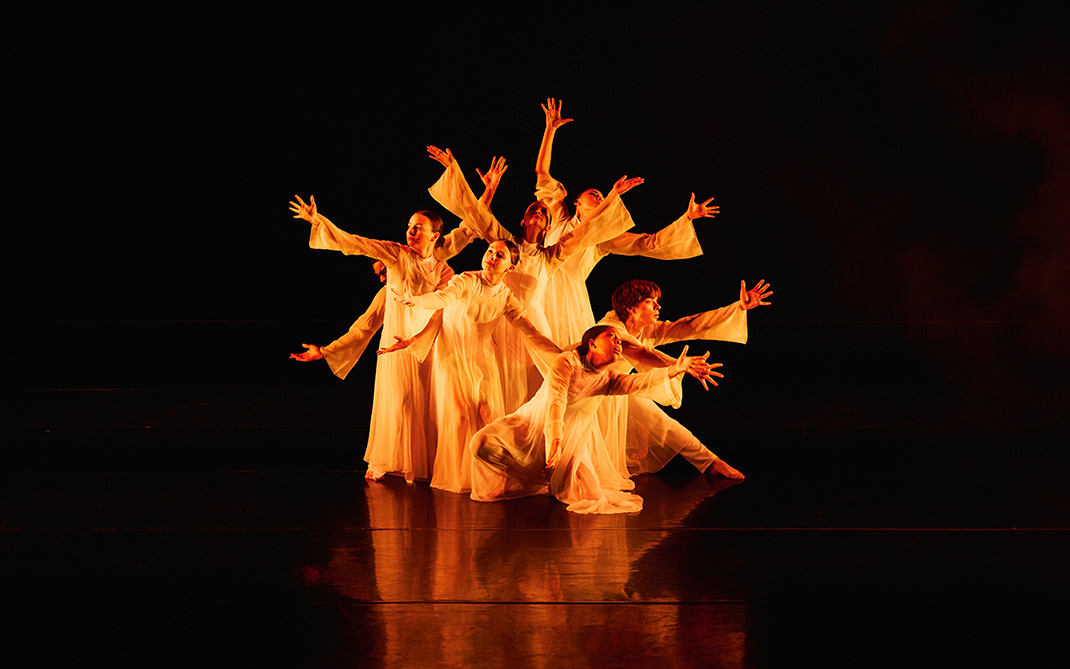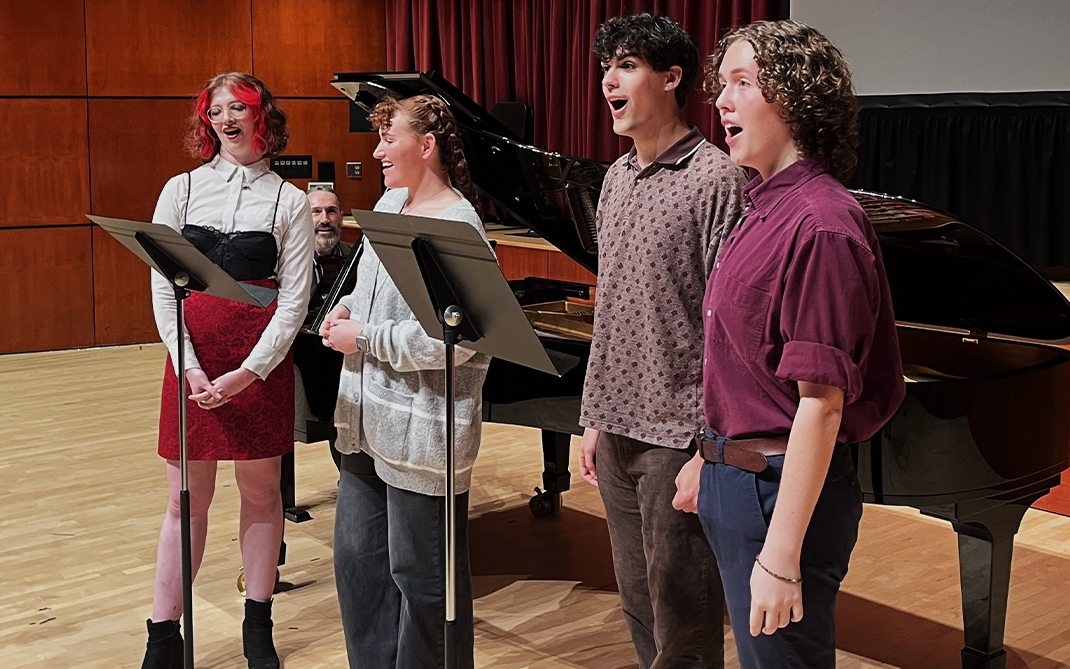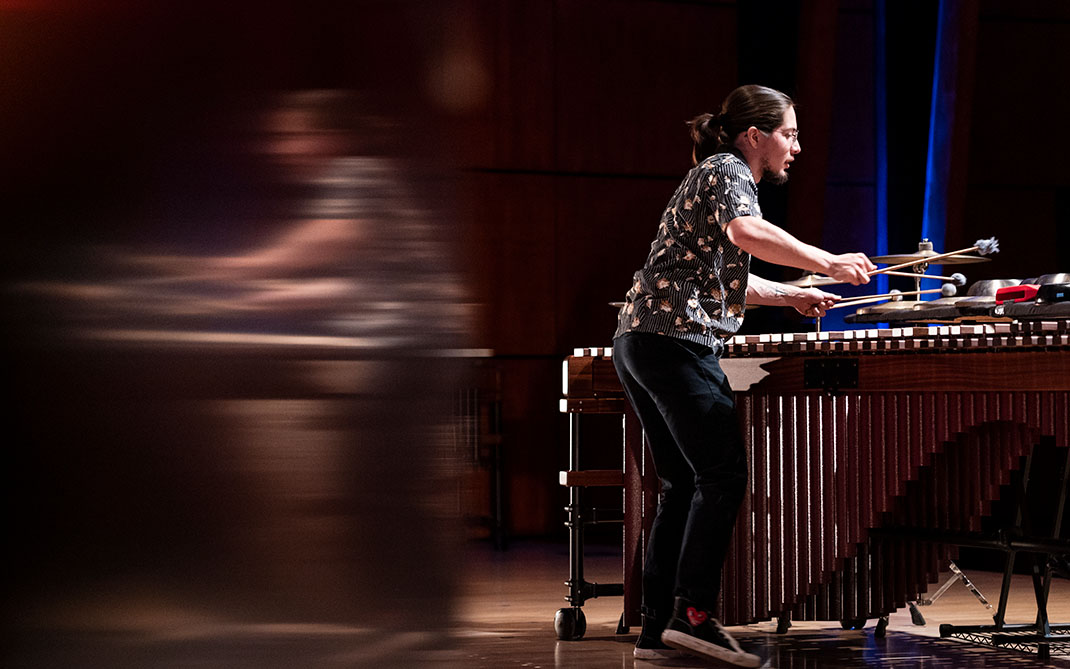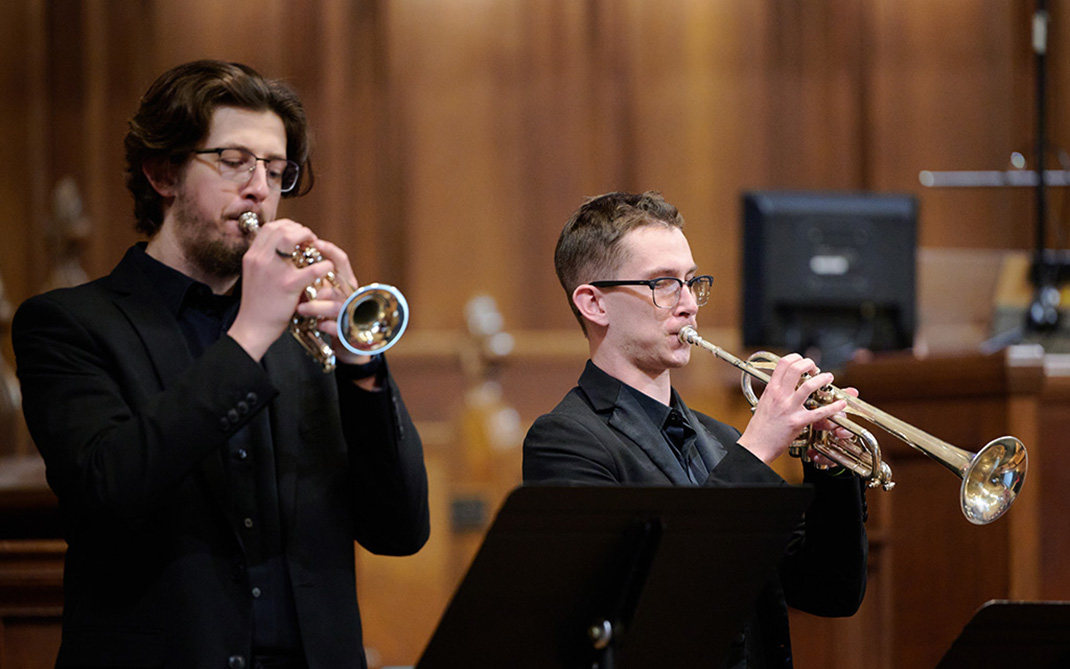The Institute for Performance Innovation
Dear Campus Community,
There has been a lot of chatter and many questions about the Institute for Performance Innovation (IPI) at UNCSA: Who will run it, what will it do, when will it launch, where will it be, and how will we actually fund it?
If only things moved so quickly in higher education. The short answer is that I can’t give you all the answers—yet. But let me back up for a moment and clarify what we’re doing with that $10 million anonymous gift I announced in December.
You may be surprised to learn that only a fraction of the pledge will help establish IPI. It’s up to us to raise the rest through industry partnerships, individual donors, and incremental revenues. Our comprehensive campaign will address these and many other needs in the years ahead. Although we are still in the process of our feasibility study, we are actively fundraising during the quiet phase.
Like all major gifts, the $10M must be allocated to fulfill the donor’s intent. In this case, it was to help us launch transformational academic programs in D&P and Filmmaking, support students and faculty in the School of Drama, upgrade our technology infrastructure, and drive groundbreaking industry research and development that will open up new career pathways for our graduates. Here’s how the gift breaks down over a five-year period:
Institute for Performance Innovation
- $1M endowed toward IPI Executive Director salary
- $1M endowed toward operating expenses
Design and Production Graduate Programs
- $3M endowed graduate fellowships (essential for recruiting the best students)
- $1M endowed toward operating expenses
- $2M technology and teaching infrastructure
Filmmaking Graduate Program in Gaming and Virtual Reality (VR)
- $1M technology and teaching infrastructure
Drama Program Enhancement
- $1M for endowed scholarships and/or endowed faculty chairs, allocated at the Dean’s discretion
The IPI remains very conceptual at this point, but this we do know: It will be an independent, associated entity of UNCSA, like the Kenan Institute for the Arts and the Center for Design Innovation, and we expect it will formally launch in 2018-19. In the meantime, our top priority will be to hire the Executive Director, who will determine the IPI’s organizational structure and funding model, and rapidly grow the Institute into a future-focused creative incubator where designers, filmmakers, musicians, dancers, actors, and other artists can create innovative content, shape new platforms, collaborate across schools and disciplines, and define a new wave of technology-enhanced arts experiences.
One of the inaugural projects we expect to illustrate the power and potential of the IPI will be The Red Shoes, a joint production with Dance, Film and D&P, slated for April 2018. An original work combining dance and film inspired by the fairy tale by Danish poet and author Hans Christian Andersen, it promises to attract national attention to UNCSA.
To propel UNCSA and the IPI to the leading edge of performance, the Institute’s Executive Director must work with our Deans and Faculty to leverage existing industry partners—including World Stage, Cirque du Soleil, Oculus, Advanced Micro Devices (AMD), Radiant Images, The Virtual Reality Company (VRC), and VRiety Shows —and form new partnerships with emerging leaders. If you’ve seen Photonapalooza, D&P’s dazzling light show, you’ve witnessed a shining example (literally) of how deepening industry ties directly and immediately improves student learning outcomes.
Eventually, ongoing R&D at the IPI will support new academic programs housed in our schools of Filmmaking and Design and Production. If you think we’re all too absorbed these days in our hand-held mobile devices, I can assure you they’ll be replaced in the foreseeable future by headsets that transport us to virtual worlds of our wildest imaginings. What I’ve personally experienced in our film school’s nascent VR lab was enough to demonstrate how this emerging immersive platform will upend the entertainment industry, revolutionize the way we teach, and dramatically impact the work of doctors, engineers, artists, and storytellers. That’s why our School of Filmmaking plans to launch VR/gaming as a new graduate concentration within the MFA in Film, enrolling its first students in the fall of 2018. We are also in conversations with several N.C. universities to explore partnering with their entrepreneurship and engineering programs to accelerate our progress.
At the end of last year, Dean Susan Ruskin inked a formal partnership with Oculus, one of the world’s greatest VR pioneers—to get this emerging technology into our classrooms, and allow our students to explore new frontiers such as narrative development, 360 production sound design, video scoring and interactive production in game engines, motion capture, and animation. By 2020, revenues for virtual and augmented reality industries are projected to be between $120 to $150 billion, driven by hardware, games, branding, narrative storytelling and commerce. The most cartoonish experiments in immersive entertainment make 3-D films seem as quaint as old silent movies.
Even as VR headsets become as ubiquitous as smartphones, live entertainment will continue to hold us in unique thrall. Alumni from D&P already rule behind the scenes of the world’s stages; our new graduate concentration in animatronics will allow them to succeed in industry sectors beyond traditional reach. Animatronics combines art, technology, and mechanical engineering in the making of computer-operated creatures for use in films, theme parks, and spectacular live productions. The program, expected to enroll seven students in the first year, builds on the strengths of our existing curricula in stage automation, wig and makeup, and prosthetics. The initial funding for technology infrastructure will give UNCSA a huge advantage in attracting the best students, and will help leverage additional funding for faculty, equipment, and facilities.
The campus master planning process, which we expect to begin this spring, will help determine where to locate IPI, and how to pay for it along with dozens of other competing needs and priorities.
Our future success, and even our very existence, depends on our capacity to innovate in the arts, increase our impact on the state of North Carolina, and drive the success of global creative industries. I expect this transformative $10 million gift, invested wisely, to pay huge artistic dividends well into the next half century.
Until next month,
 M. Lindsay Bierman
M. Lindsay Bierman
Chancellor
March 1, 2017





